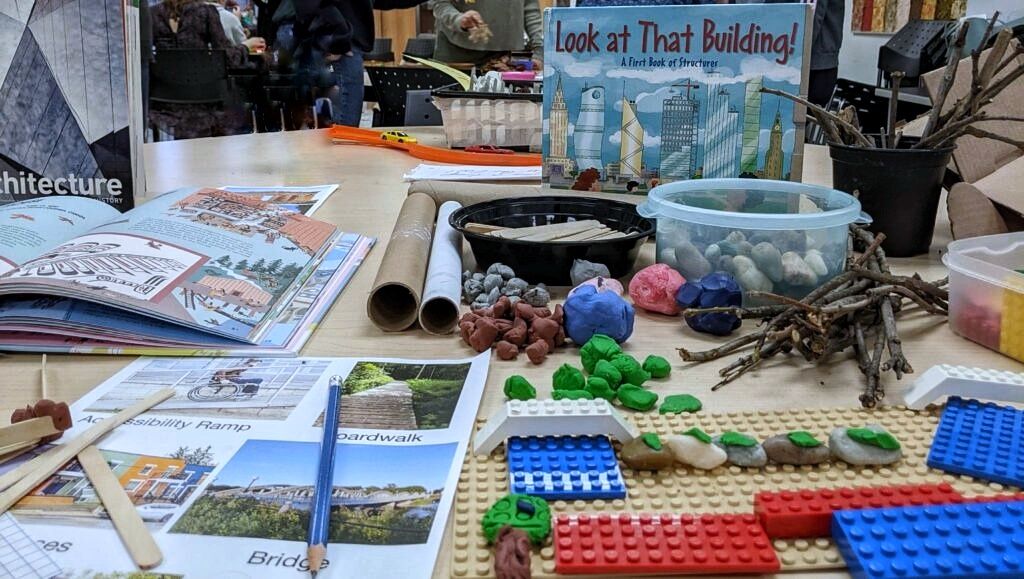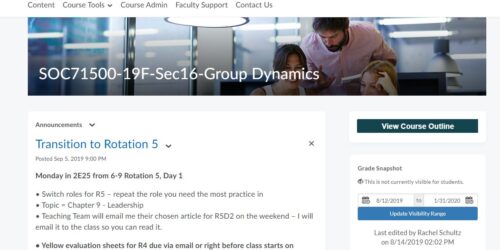
Planning and Facilitating Effective Peer Assessment
Peer assessment, also called peer review, is an instructional approach that allows learners to consider, evaluate, and provide feedback on the level, value, or quality of the intellectual product of a peer (Topping, 1998).
This guide is intended to support faculty with important considerations in making decisions and/or planning for incorporating peer assessment into their courses.
Considerations for a Successful Peer Assessment Process
- Clarify the objective or goals of the peer assessment activity. Is it for assessing students’ feedback skills, learning concepts, learning how to assess, or active participation? Or a combination?
- Consider the function that the peer assessment is serving: Summative, formative, or both.
- Do you want peer reviewers to remain anonymous? Consider student privacy issues by anonymizing the process if there is a need.
- If applicable, clarify the number of feedback iterations between peers with students. How many reviews will each assignment receive?
- Identify and teach the skills needed for peer assessment. Encourage students to respond as a peer rather than as an instructor.
- Present peer review as an opportunity for students to receive extensive feedback on their work.
- Discuss the nature of the information students need to provide as feedback to their peers: quantitative and/or qualitative.
- Identify a working principle for grouping students (e.g., random, year, ability, etc.), who will be responsible for grouping students (e.g., instructor, students), and the consistency of groups (e.g., fixed for the entire semester or change for different assignments).
- Explicitly link peer assessment with the course learning outcomes (what you want students to know, value, or do, if applicable). For example, “At the end of this activity, you will be able to effectively assess the strengths and weaknesses of peer’s work and make concrete suggestions for improvement.”
Planning for Peer Assessment
- Identify where you can incorporate peer assessment exercises into your course.
- For peer assessment on written assignments, design guidelines that clearly specify defined tasks for the reviewer. Consider the feedback students can competently provide.
- Determine whether peer assessment will be conducted as in-class or out-of-class (or a combination of both).
- Plan for in-class peer assessment to last at least one class session. More time may be needed for longer assignments.
- Model appropriate constructive and descriptive feedback through the comments you provide on assignments and in-class activities.
- Explain the reasons for engaging students in peer assessment, the benefits it provides, and how it will support their course learning outcomes.
- Set clear expectations: Clarify with students if they will provide grades on their peers’ work. If grades will be assigned, be clear about what you are assessing, what criteria and tool(s) will be used for grading, and how the peer assessment grade will be incorporated into their overall course grade. Remember to consult the Conestoga Evaluation of Student Learning Policy: “No evaluation component can be a must-pass. Any peer evaluation must be identified on the course outline, be limited to 10% of the course grade, and follow objective processes and criteria” (p.1).
Before the First Peer Assessment Session
- Give students a sample paper to review and comment on in class using the peer assessment guidelines. Ask students to share feedback and help them rephrase their comments to make them more specific and constructive, as needed.
- Consider using the sample paper exercise to teach students how to think about, respond to, and use comments by peers to improve their work.
- Ask for input from students on the peer assessment worksheet or co-create a rubric in class.
- Prevent overly harsh peer feedback by encouraging students to provide feedback as if they were speaking to the writer or presenter directly.
During and After Peer Assessment Sessions
- Give clear directions and time limits for in-class peer review sessions and set defined deadlines for out-of-class peer review assignments.
- Listen to group discussions and provide guidance and input when necessary.
- Consider requiring students to write a plan for revision indicating the changes they intend to make to the paper or work and explaining why they have chosen to acknowledge or disregard specific comments and suggestions. For exams and presentations, have students write about how they would approach the task next time based on their peer’s comments.
- Ask students to submit the peer feedback they received with their final papers. Make clear whether or not you will be taking this feedback into account when grading the paper.
- Consider having students assess the quality of the feedback they received.
- Discuss the process in class, addressing problems encountered and lessons learned.
Peer Assessment Scenarios
- Written Papers: After collection, redistribute papers randomly along with a grading rubric. After students have evaluated the papers, ask them to exchange them with a peer, evaluate the new paper, and then compare notes.
- Low-stakes Tests: After completing a test, have students compare and discuss answers with a partner. You may offer them the opportunity to submit a new answer, dividing points between the two (or not assigning points at all).
- Individual Presentations: Invite anonymous peer reviewers to a presentation and collect feedback to send to presenters after the class.
- Group Presentations: Require the class to evaluate another group’s performance using a predetermined feedback or grading scheme.
- Group Projects: When working on group projects, have students evaluate each group member’s contribution to the project on a scale of 1-10. Require students to provide a rationale for how and why they awarded points to their peers.
References and Selected Resources
Cho, K., & MacArthur, C. (2010). Student revision with peer and expert reviewing. Learning and Instruction, 20(4), 328-338.
Kollar, I., & Fischer, F. (2010). Peer assessment as collaborative learning: A cognitive perspective. Learning and Instruction, 20(4), 344-348.
Topping, K. (1998). Peer Assessment between Students in Colleges and Universities. Review of Educational Research, 68(3), 249–276, doi.org/10.2307/1170598.
van Zundert, M., Sluijsmans, D., & van Merriënboer, J. (2010). Effective peer assessment processes: Research findings and future directions. Learning and Instruction, 20(4), 270-279.
Zhan, Y., Wan, Z. H., & Sun, D. (2022). Online formative peer feedback in Chinese contexts at the tertiary Level: A critical review on its design, impacts and influencing factors. Computers & Education, 176, 104341, doi.org/10.1016/j.compedu.2021.104341.
Projects at WestEd: Formative Assessment Insights: The basics of peer assessment
George Mason University Writing Across the Curriculum: How to Help Students Give Effective Peer Response
WAC Clearinghouse. (2006, April). Creating effective peer review groups to improve student writing (Tip Sheet).
University of Colorado Boulder: Tips on designing rubrics for peer-assessment.






